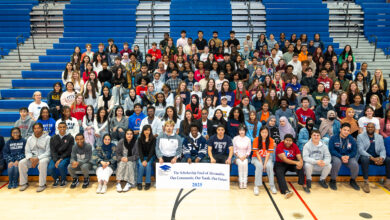Meet the New Principal: Seazante` Williams Oliver to Head George Mason Elementary School
Oliver has served as assistant principal at the school since 2012

ALEXANDRIA, VA – Dr. Seazante` Williams Oliver, has been named the new principal of George Mason Elementary School. Alexandria City Public Schools (ACPS) Superintendent Dr. Gregory C. Hutchings, Jr. made the selection at a July 17 school board meeting.
Oliver is a familiar face around George Mason. She has served at the school as assistant principal since 2012, and just last month, became interim principal. She assumes the duties of principal on July 20.
Shortly after learning of her appointment, she said, ” I am proud to be a leader of the George Mason Dragons and elated to begin supporting students in this new capacity.”
A dedicated educator for the last two decades, Oliver is also very involved in the Alexandria community. She volunteers with the Child and Family Network Centers and Envoy of Alexandria. In D.C., she helps at Martha’s Table and Food and Friends, making sure that families in need receive food and other types of support.
Before her time with ACPS, Oliver worked in the Hampton Roads area of Virginia. She taught there, served as a coordinator for summer programs, and held assistant principal and principal positions.
She received her bachelor’s and master’s degrees from Norfolk State University. At The George Washington University, she earned her education specialist and doctorate in education degrees.
“George Mason is a wonderful place to learn,” Oliver said. “Our teachers and staff are dedicated, caring, skillful professionals. Our parent and community support makes a difference in the lives of our students.”
RELATED: ACPS Superintendent Welcomes 21 New Hires as Part of Restructuring




